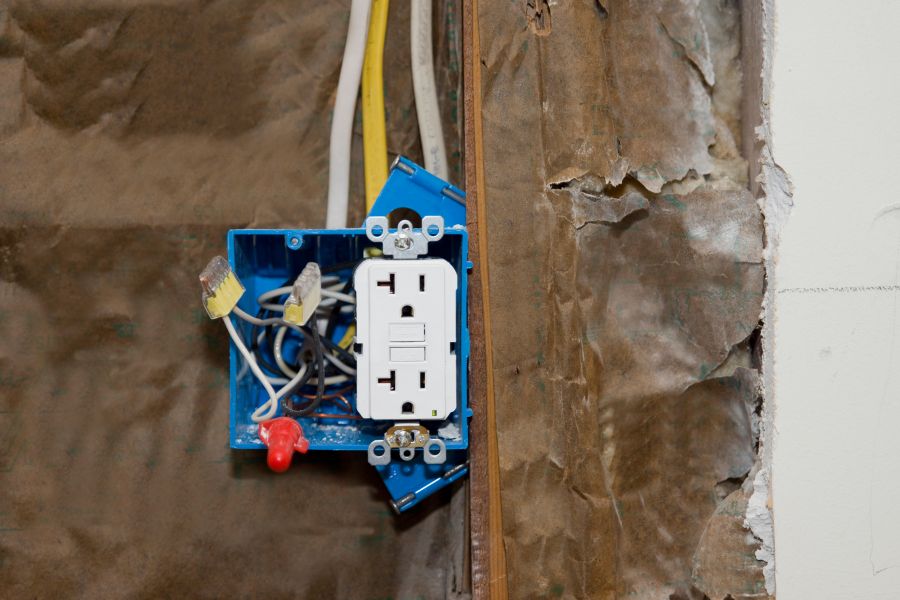
Looking to replace an electrical outlet but unsure where to start? Look no further than R & T Yoder Electric, Inc.! Founded by Rod and Tina Yoder in 2004, this family-owned business has over 15 years of experience in the industry. With a team of over 50 employees, including Rod’s sons Vincent and Mitchell, they are the electricians you can trust to get the job done right. From your home to your business, Yoder Electric handles every job with professionalism, ensuring satisfied customers every time. So, if you’re in need of replacing an electrical outlet, you know who to call!
Have you ever experienced problems with your electrical outlets, such as sparking or not working properly? Maybe it’s time to replace them. Don’t worry, you don’t have to be an expert electrician to do this task. In this article, I’ll guide you through the process of replacing an electrical outlet step by step. By following these instructions, you’ll be able to update your outlets safely and efficiently. Let’s get started!
Gathering Materials and Tools
Before you begin replacing the electrical outlet, make sure you have all the necessary materials and tools on hand. Here’s a list of what you’ll need:
- New electrical outlet
- Screwdriver (flathead and Phillips)
- Needle-nose pliers
- Voltage tester
- Wire stripper
- Electrical tape
- Safety goggles
- Work gloves
Having all these materials and tools ready will ensure a smooth and successful outlet replacement process.
Finding the Right Electrical Outlet
When choosing a new electrical outlet, it’s crucial to select the right type that matches your current setup. There are various types of outlets, including:
- Standard duplex outlets: These are the most common outlets found in homes and are used for general electrical needs.
- GFCI outlets: Ground Fault Circuit Interrupter outlets are required in specific areas like bathrooms, kitchens, and outdoor locations to prevent electric shock.
- AFCI outlets: Arc Fault Circuit Interrupter outlets help prevent electrical fires by detecting faults in the circuit.
Make sure to determine which type of outlet you need based on the location and purpose of the outlet you’ll be replacing.
Safety First
Before you start working on replacing the electrical outlet, remember to prioritize safety. Here are some essential safety tips to keep in mind while working:
- Always turn off the power to the outlet at the main electrical panel before beginning any work.
- Use a voltage tester to ensure that the power is off before touching any wires.
- Wear safety goggles and work gloves to protect your eyes and hands.
- Work in a well-lit area to clearly see what you’re doing.
- If you’re unsure about any step in the process, don’t hesitate to contact a professional electrician for assistance.
By following these safety precautions, you can prevent accidents and ensure a safe working environment.
Removing the Old Outlet
Now that you’re prepared with the right tools and safety precautions, it’s time to remove the old electrical outlet. Follow these steps to replace the outlet:
- Turn off the power: Go to the main electrical panel and switch off the power to the outlet you’ll be replacing.
- Remove the outlet cover: Use a flathead screwdriver to unscrew the outlet cover and set it aside.
- Unscrew the outlet from the box: Use a screwdriver to loosen the screws holding the outlet in place. Carefully pull the outlet out of the electrical box.
- Disconnect the wires: Using your needle-nose pliers, disconnect the wires attached to the outlet by loosening the terminal screws.
- Test the wires: Use a voltage tester to ensure that there is no power running through the wires.
- Remove the outlet: Once you’ve disconnected the wires and tested for power, you can remove the old outlet completely.
Taking these steps will allow you to safely remove the old outlet and prepare for installing the new one.
Installing the New Outlet
With the old outlet removed, it’s time to install the new outlet. Follow these steps for a successful installation process:
- Connect the wires: Match the wires from the new outlet to the corresponding wires in the electrical box (black to black, white to white, and green/bare copper to green/bare copper). Use your needle-nose pliers to secure the wires under the terminal screws.
- Secure the outlet: Carefully place the new outlet back into the electrical box and use a screwdriver to tighten the screws.
- Attach the outlet cover: Once the outlet is secured in place, reattach the outlet cover with the screws you removed earlier.
- Turn on the power: Return to the main electrical panel and switch the power back on to the outlet.
- Test the new outlet: Use a voltage tester to check if the outlet is working correctly. Plug in a small electronic device to ensure that it’s receiving power.
By following these steps, you can successfully install the new electrical outlet and test its functionality.
Troubleshooting Common Issues
Sometimes, despite following all the steps carefully, you may encounter issues with the new electrical outlet. Here are some common problems you might face and how to troubleshoot them:
Outlet not working after installation
If the new outlet is not working after installation, double-check the following:
- Make sure the wires are connected securely to the terminal screws.
- Test the outlet with a voltage tester to check for power.
- Verify that the power is turned on at the main electrical panel.
If the outlet still doesn’t work, you may need to consult a professional electrician to diagnose and resolve the issue.
Sparks or flickering lights
Sparks or flickering lights from the outlet indicate a potentially dangerous problem. Turn off the power immediately, double-check the wiring connections, and contact an electrician for further inspection and repair.
Outlet feels warm to the touch
If the outlet feels warm or hot to the touch, it could be a sign of an overloaded circuit. Unplug any devices connected to the outlet and contact an electrician to assess the situation and prevent any electrical hazards.
By troubleshooting these common issues, you can ensure the safety and functionality of your new electrical outlet.
Final Thoughts
Remember, safety is always the top priority when working with electricity. If you face any challenges or uncertainties during the outlet replacement process, don’t hesitate to seek assistance from a professional electrician.
With the right tools, materials, and guidance, you can update your electrical outlets with confidence and ensure a safe and functional electrical system in your home. Thank you for taking the time to learn how to replace an electrical outlet. Happy DIY-ing!







